Understanding Bearded Dragons and Their Rock Cave Habitats
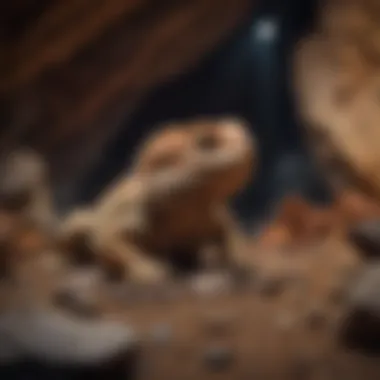
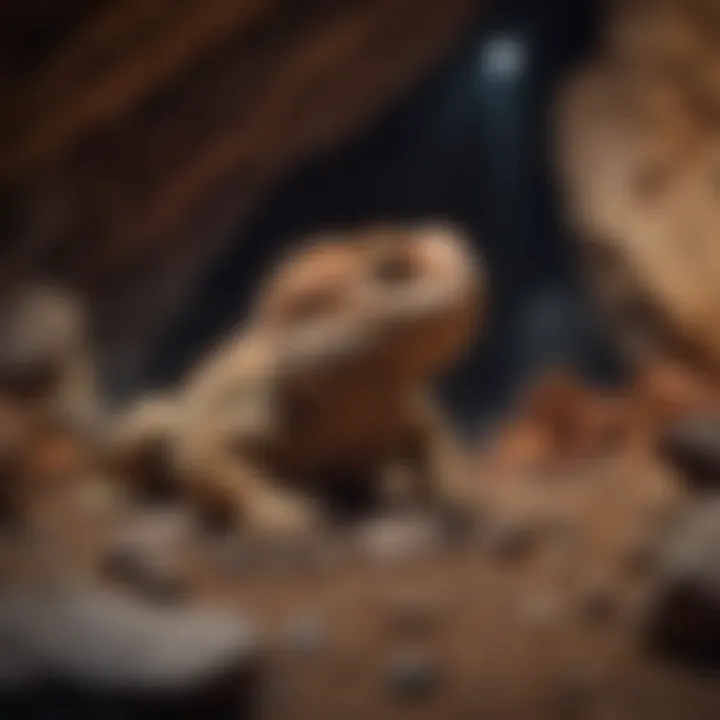
Intro
Bearded dragons, those charming lizards that have taken the reptile world by storm, are not just pets for the adventurous; they come with a treasure trove of secrets about their habitat needs and behaviors. One such essential aspect of their environment is rock caves. These nooks and crannies play a vital role in the daily lives of bearded dragons, influencing everything from their eating habits to their social interactions.
In this article, we're diving deep into the world of bearded dragons, focusing on their unique behaviors and habitat requirements, specifically the part that rock caves play in their lives. Understanding these creatures' natural habitats helps us appreciate their complex needs better and can lead to improved care in captivity. So whether you’re a seasoned reptile keeper or just curious about these fascinating lizards, let’s uncover the intricacies of their lives, from their natural habitats and physiological adaptations to practical tips for enhancing their well-being in a captive environment.
By exploring this topic, we aim to give current and prospective bearded dragon owners insightful information that'll serve as a solid foundation for better care practices.
Understanding Your Pet
Pet Behavior Basics
At the heart of caring for any pet is understanding its behavior. Bearded dragons are highly social animals that display a variety of fascinating behaviors. They communicate through body language, and recognizing these signs can aid in nurturing a healthy relationship with your pet. For instance, when they flatten their bodies, it signals a feeling of threat, while head bobbing can indicate dominance or even a mating display.
Common Breed Characteristics
Bearded dragons come in various breeds, with the Pogona vitticeps being the most popular among pet owners. Different breeds may have slight variances in coloring and size, but they share common characteristics that make them distinct. For instance, their laid-back nature makes them quite appealing, especially to families with children. How they react to their environment can be just as telling; those who bask in sunlight or seek out their caves might be indicating their specific habitat preferences.
Species-Specific Needs
Understanding the specific needs of bearded dragons is crucial for their well-being. They thrive in a well-structured environment that mimics their natural habitat. This includes access to heat sources and hiding spots, like rock caves, which help them regulate their body temperature and feel secure. Familiarizing oneself with these needs results in a happier, healthier pet.
"Creating an environment that reflects a bearded dragon's natural habitat can lead to significant improvements in their behavioral health."
Pet Care and Maintenance
Feeding Guidelines
A well-balanced diet is the backbone of any pet's health. Bearded dragons are omnivores, and their diets should consist of a mix of insects like crickets and mealworms, along with leafy greens and the occasional fruit. It's essential to vary their diet to ensure they receive all the necessary nutrients. Remember, feeding practices might fluctuate based on their age—it’s important to seek age-appropriate foods.
Grooming Essentials
Grooming for bearded dragons is more about health monitoring than traditional grooming like you’d find in dogs or cats. Regularly checking your pet's skin and eyes can give insights into their health. Bathing them can also help shed old skin and keeps them hydrated.
Hygiene Practices
Maintaining a clean living environment is vital. Regularly clean their habitats, ensuring that any waste is promptly removed. This not only keeps odors at bay but also prevents the growth of harmful bacteria. Using non-toxic cleaning materials ensures your pet's safety during maintenance activities.
Training and Development
Basic Commands and Skills
While bearded dragons are not typically trained like dogs, they can learn basic commands through positive reinforcement. Associating their name with treats when they respond can lead to successful training over time.
Behavioral Training Techniques
Positive reinforcement goes a long way in achieving desired behaviors. Offering treats, such as a favorite snack, after exhibiting appropriate behaviors helps mold their responses. Patience is key here, as not every dragon will pick up commands right away.
Addressing Common Behavior Issues
Like any pet, bearded dragons can exhibit behavioral issues. Stress or discomfort from not having a secure hiding spot can lead to behaviors like excessive hiding or aggression. Ensuring that they have access to caves or other structures can greatly reduce these issues.
Health and Wellness
Routine Vet Check-ups
Just like any other pet, routine vet visits for your bearded dragon are crucial. Regular check-ups can identify health issues early. Be sure to find a veterinarian familiar with reptilian care to get the best advice.
Vaccination Needs
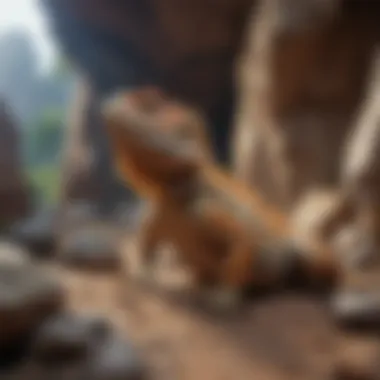
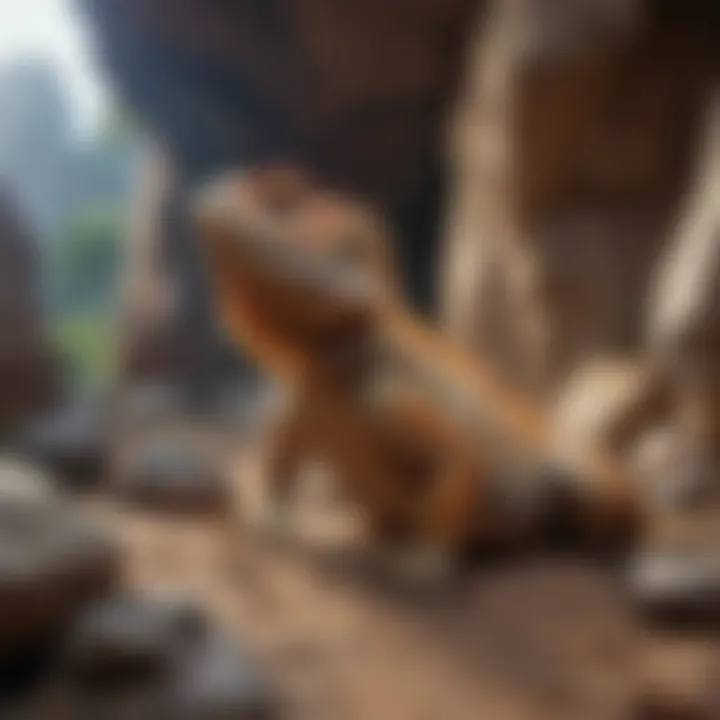
While there aren't vaccines specific to bearded dragons, it's important to keep their living conditions clean to prevent infections. Your vet may provide guidance on preventive care tailored to your pet's specific circumstances.
Recognizing Signs of Illness
Awareness is half the battle. Watch for changes in appetite, lethargy, or unusual behaviors; these can all be signs of underlying health issues. Early intervention can make a significant difference in treatment outcomes.
Enrichment and Activities
Indoor vs. Outdoor Activities
Both indoor and outdoor environments present unique enrichment opportunities. While indoor spaces should have climbing structures and safe spots for hiding, outdoor experiences—under supervision—can allow your dragon to explore a more natural environment.
Interactive Toys and Games
Bearded dragons are smart and can benefit from interactive toys. Simple items like balls, mirrors, or even cardboard boxes can stimulate their minds.
Socialization Opportunities
While bearded dragons aren't social creatures like dogs, they do benefit from gentle handling and exposure to different environments. Gradually introducing them to new sights and sounds can support their adaptability.
In summary, understanding the behaviors and habitat needs of bearded dragons, particularly regarding rock caves, enables pet owners to create suitable and enriching environments for their scaly companions. As we dive deeper into each of these sections, we’ll glean even more insights that elevate our care methodologies and foster admiration for these fascinating reptiles.
Understanding Bearded Dragons
Understanding bearded dragons is crucial for anyone interested in these fascinating reptiles. Bearded dragons, with their unique characteristics and behaviors, offer insights not only into the lives of specific species but also into reptilian ecology as a whole. In this article, we will delve into various aspects of their existence, focusing particularly on the interplay between their natural behaviors, habitat requirements, and the significance of rock caves within their ecosystem.
Species Overview
Bearded dragons belong to the family Agamidae. The most common species kept as pets is the Pogona vitticeps, also known as the central bearded dragon. These reptiles are native to the arid regions of Australia, where they thrive in diverse habitats including woodlands, scrublands, and deserts.
Their typical weight ranges between 300 to 500 grams, with a body length of around 18 to 24 inches. Bearded dragons are named for the distinctively spiny throat pouch, or “beard,” that can change color based on mood, health, and environmental conditions. For instance, when feeling threatened, a bearded dragon might puff out its beard, turning it dark, as a display of intimidation.
In natural settings, these creatures are diurnal—active during the day—and are known for their toasty basking rituals, where they sunbathe on rocks or branches to regulate their body temperature. This behavior is key to their overall well-being and formation of social structures in the wild.
Anatomical Features
Bearded dragons boast several distinctive anatomical features that facilitate their adaptation to harsh environments. Their flattened bodies not only aid in camouflage against predators but also enhance their thermoregulation ability by allowing them to absorb sunlight more efficiently. Here are some standout features:
- Coloration: Their scales can range from sandy brown to bright yellow, providing effective camouflaging in their natural habitats.
- Limbs: Equipped with strong limbs and sharp claws, they are agile climbers, which helps them to navigate rocky terrains and evade threats.
- Tail: A muscular tail not only serves balance while climbing but also acts as a defense mechanism. They can shed it when captured, akin to a lizard defense tactic.
These features play a vital role in their survival and interactions within their environments. Understanding these anatomical traits paints a clearer picture of the bearded dragon's life and the care they need when kept in captivity.
"Understanding their structure and behaviors is key to creating a thriving habitat, whether wild or in your home."
Overall, exploring the intricacies of bearded dragons' species and anatomy provides a solid foundation for appreciating their needs and the conditions necessary for their well-being.
Natural Habitat of Bearded Dragons
Understanding the natural habitat of bearded dragons is crucial to effectively care for these fascinating creatures. Naturally, their habitat encompasses more than just a setting; it includes all the essentials that allow them to live fully and thrive. By becoming acquainted with their geographic distribution and the environmental conditions that prevail, pet owners can enhance their dragons' quality of life in captivity.
Geographic Distribution
Bearded dragons are primarily found in the arid and semi-arid regions of Australia. This geographical spread is not merely a random pattern; it reflects adaptations that allow them to navigate and live in such varied landscapes. From the sunbaked outback to rocky hillsides, these reptiles have carved out a niche that offers both safety and opportunities for foraging.
In Australia, you might spot them in places like Queensland and New South Wales, often basking on sun-soaked rocks or blending into the dry, dusty earth. They're not picky, though; they’ve been known to thrive in scrublands, woodlands, and in some cases, even disturbed environments where more human influence has occurred. This flexibility is a testament to their hardiness.
Alongside their geographic distribution, understanding their natural movements can provide important insight into their behavioral patterns. In the wild, they tend to congregate around areas that offer adequate shelter and basking zones — a dance between safety and temperature regulation. Consequently, those who care for these creatures should consider mimicking these conditions in captivity to help satisfy their innate instincts.
Environmental Conditions
The environmental conditions bearded dragons inhabit are multi-faceted and serve to fulfill their physiological needs. They thrive in areas with ample sunlight, as their ectothermic nature means they rely on external heat sources to regulate body temperature. Ideally, bearded dragons enjoy basking in warm temperatures that can reach up to 35 degrees Celsius (95 degrees Fahrenheit) during the day, with cooler areas in their habitat allowing for behavioral thermoregulation.
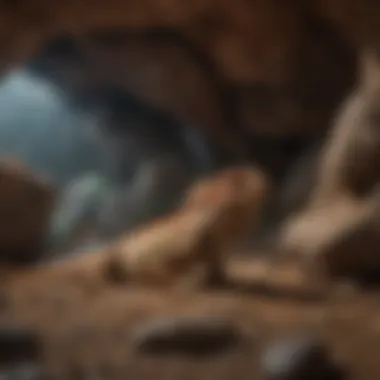
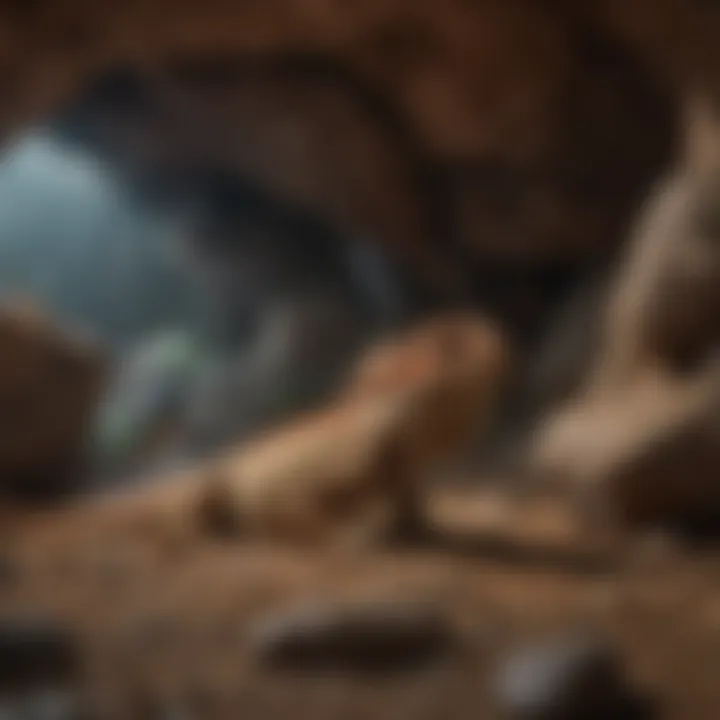
Moreover, it’s not just temperature that's vital; humidity plays a role, too. In their natural habitat, humidity levels tend to fluctuate, and although the dragons are accustomed to arid conditions, limited humidity is beneficial for hydration and skin health. A too-dry environment can lead to shedding issues or even skin problems, which is certainly something no pet owner wants to deal with.
Important Note: Bearded dragons tend to be more active in the early morning and late afternoon when temperatures are more moderate. Replicating this cycle in a captive environment can be beneficial for their behavior and overall well-being.
The Role of Rock Caves
Rock caves serve as pivotal environments within the lives of bearded dragons, both in their natural habitats and in captivity. These unique structures offer numerous advantages that align closely with the dragons’ behaviors and habitat needs. Understanding the role of rock caves enables owners to create effective and comforting settings for these reptiles, ensuring their well-being and productivity.
Among the core benefits of rock caves are safety and shelter, which are essential for bearded dragons in the wild. These reptiles are often preyed upon by various predators, including birds of prey and snakes. Rock caves provide a sanctuary where they can hide and feel secure from danger. Additionally, the thermal properties of these caves play a significant role in their survival by aiding in temperature regulation, which is crucial given the bearded dragon's ectothermic nature. Furthermore, rock formations can help maintain increased humidity levels, which supports their overall health and hydration needs.
This article will break down these essential aspects of the role rock caves play in the lives of bearded dragons.
Shelter and Safety
Bearded dragons are not just lizards; they are creatures with instincts that push them to seek safety from potential threats. In their native habitats of arid regions, rock caves provide critical shelter where these reptiles can escape from predators. When a bearded dragon senses danger, its instinct is to retreat to a safe space, and rock crevices offer perfect hiding spots. This natural behavior must be reflected in a captive environment, where the presence of excellent shelter can enhance their overall comfort.
- Natural Hiding: Caves mimic natural surroundings, enabling the dragon to exhibit instinctual behaviors such as hiding and resting.
- Predation Avoidance: Being in a concealed area increases their chances of evading detection by any lurking threats.
- Stress Reduction: A secure area lessens stress levels, allowing bearded dragons to relax and engage in natural behaviors.
Thermoregulation
Thermoregulation is a fundamental aspect of bearded dragon health. These reptiles rely on their environment to maintain their body temperature, as they cannot internally regulate like mammals. Rock caves act as natural regulators of temperature, offering cooler areas during the heat of the day and warmer spots at night.
- Shade from Heat: In high temperatures, cave-like structures provide a shaded retreat that protects them from overheating.
- Warmth Retention: At night when temperatures drop, caves can retain heat, offering a cozy spot for rest.
- Behavioral Patterns: Bearded dragons often display specific behaviors, such as basking or retreating, based on temperature changes, highlighting the importance of accessible thermal zones.
Increased Humidity
Humidity plays a crucial role in the overall health of bearded dragons. While they originate from dry environments, the presence of rock structures often influences microclimates within their habitats. Increased humidity levels help maintain skin hydration and support respiratory health, which can be vital for preventing certain health issues.
- Microhabitats: Rocks can create microhabitats that retain moisture, enhancing the humidity levels around them.
- Hydration: Healthy humidity levels support skin shedding processes, ensuring that reptiles shed without impediments.
- Breeding Needs: For breeding bearded dragons, optimal humidity can foster healthier environments for laying eggs.
"Providing a safe, thermally controlled, and humid environment can make a significant difference in the life of bearded dragons. Not only do they thrive, but their behaviors are encouraged, showcasing their natural tendencies."
By understanding the role of rock caves, bearded dragon owners can anticipate the needs of these fascinating creatures. It's about creating a habitat that resonates with their natural instincts, enhancing every moment spent in captivity.
Behavioral Adaptations
Understanding behavioral adaptations in bearded dragons is essential for comprehending how these lizards navigate their environments, both in the wild and in captivity. These adaptations help them survive, thrive, and display unique personality traits that endear them to pet owners. Embedded in their interactions with rock caves are instinctual behaviors that speak volumes about their needs and preferences.
Hiding and Resting Behaviors
Hiding behavior among bearded dragons is not just about seeking safety; it’s a multifaceted response that impacts their physical and mental well-being. In the wild, they often retreat to crevices or rock caves to escape predators, regulate temperature, or simply rest. This instinct surfaces in captivity too, where they may seek out enclosed spaces in their tanks. Providing ample hiding spots enhances their comfort and reduces stress.
For instance, when a bearded dragon is placed in a new environment, it might remain hidden for a longer time, allowing it to acclimatize safely. This ability to hide can be crucial; a stressed lizard may refuse to eat or display signs of illness, making it vital for keepers to understand and replicate these behaviors.
Social Interactions
While bearded dragons are often seen as solitary creatures, they do exhibit social traits that can be quite engaging. Social interaction happens mostly during breeding seasons or when they feel secure. Their behaviors can vary significantly based on the environmental factors at play and their individual personalities. For example, in a group setting, a dominant dragon may claim the best basking spots or caves, while a submissive one may skulk in the shadows.
Quote: "Understanding social dynamics can lead to healthier group interactions, as recognizing and allowing for personalities can decrease territorial disputes."
Interactions can encompass head bobbing, arm waving, or even synchronized basking, which might seem trivial but is representative of their need for companionship—this can occur in both wild settings and effectively managed captivity. As pet owners, recognizing these behaviors will be key to promoting a harmonious living environment.
Hunting and Foraging Strategies
Bearded dragons are opportunistic feeders, and their foraging strategies are worth dissecting. Observing how they hunt reveals their adaptability and intelligence. In the wild, they primarily hunt insects, small mammals, and vegetation, demonstrating varied methods to secure food. Their keen eyesight allows them to spot movement from a distance, critical for catching rapid prey like crickets or locusts. This adaptability is accentuated when in proximity to rock caves, where a flush of insects might occur, especially in damp environments.
Captive bearded dragons will also reflect these hunting behaviors if enriched environments are provided. Scatter feeding—in which food is spread across the tank—encourages natural foraging, making meal times engage and lively. Monitoring their hunting techniques not only enhances their well-being, but also acts as a window into their overall health and activity levels.
Caring for Bearded Dragons in Captivity
Caring for bearded dragons in captivity is a multifaceted endeavor. Understanding their needs is crucial for promoting health and happiness among these reptiles.
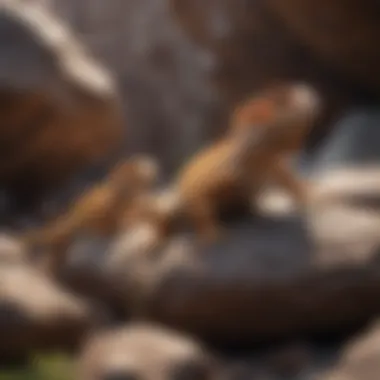
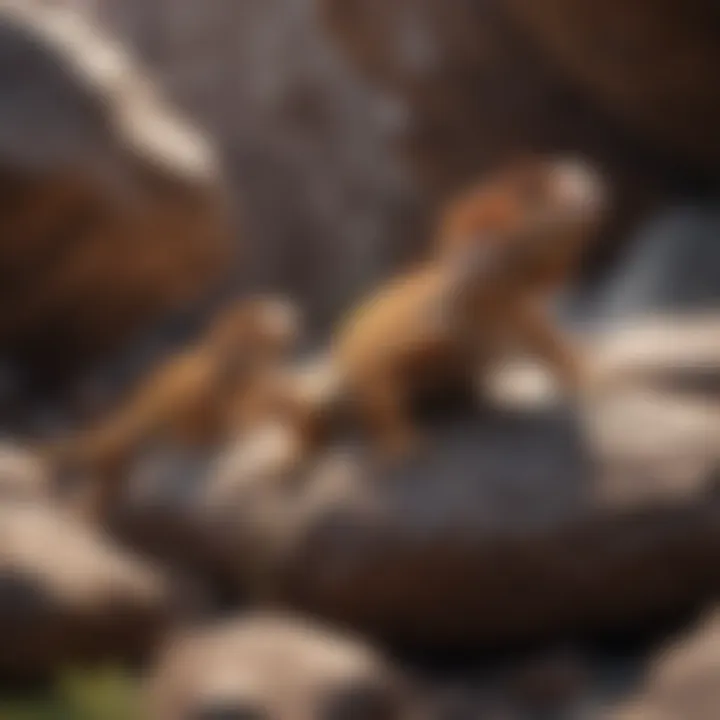
When they are kept as pets, bearded dragons rely on their owners to replicate the essential components of their natural environment. This not only involves adequate space and nutrition but also specific habitat features like rock caves that offer shelter. Failing to provide these needs can lead to stress and health issues, which is why proper care practices are so vital.
Replicating Natural Habitats
Replicating the natural habitat of bearded dragons is key to their well-being. In the wild, they inhabit sun-soaked, arid environments complete with rock formations and hiding spots. Owners should aim to mirror this setting as closely as possible. For instance, using a substrate of sand or soil can simulate the desert floor.
Considerations for creating a natural habitat:
- Substrate: Choose natural substrates like organic soil or sand to encourage digging and burrowing, mimicking their instinctual behaviors.
- Decor: Incorporate live plants, branches, and rocks to provide climbing opportunities and create hiding spaces. This helps mimic their wild conditions and gives them secure spots to retreat to.
- Enclosure Size: Ensure the habitat is spacious enough—an enclosure of at least 40 gallons is recommended for adult bearded dragons. A larger space mimics their natural wandering behaviors.
By focusing on creating a natural environment, pet owners can significantly boost the happiness and health of their bearded dragons.
Creating a Rock Cave Setup
Among the most important aspects of a bearded dragon's habitat is the setup of rock caves. These caves not only provide shelter but also play a vital part in their psychological comfort.
- Materials: Use natural stones or commercially available reptile hideouts that resemble rocks. Ensure they are solid and safe without sharp edges.
- Placement: Position these caves in areas where they receive indirect sunlight. A spot where they can regulate their temperature is ideal.
- Maintenance: Keep the caves clean and inspect regularly for any signs of wear or residue that could affect the dragon's health.
A well-crafted rock cave setup encourages bearded dragons to feel secure, encouraging natural behaviors like hiding and resting, which are crucial for their overall well-being.
Maintaining Proper Lighting and Temperature
Proper lighting and temperature are paramount. Bearded dragons are ectothermic; they need heat from their environment to thrive. In a captive setting, the correct lighting setup has both health and behavioral implications.
- Basking Area: Create a basking spot with a heat source that reaches around 100 to 110 degrees Fahrenheit. Use a UVB light to mimic sunlight, aiding in calcium absorption and ensuring that the bearded dragon's metabolic functions operate smoothly.
- Cooling Zone: Provide a cooler area of around 75 to 85 degrees Fahrenheit, giving them a space to self-regulate their body temperature.
- Lighting Schedule: Mimic natural light cycles with a consistent 12 hours of light and 12 hours of darkness. This helps them recognize the day-night cycle and behave accordingly.
Health Considerations
Taking care of a bearded dragon encompasses more than just providing food and shelter; it involves understanding their health needs. Recognizing the signs of stress and being aware of common health issues are vital for their well-being. The health of these reptiles can significantly influence their behavior and habitat needs, particularly in contexts like rock caves where they instinctively seek comfort and security.
Monitoring health can offer insights into whether you're providing an environment that meets their expectations, ensuring that your pet thrives both physically and mentally. By paying attention to these considerations, owners can create a sanctuary rather than just a habitat, directly impacting the quality of life for their bearded friends.
Signs of Stress
Stress in bearded dragons is often an indicator that their environment isn't quite right. Several signs can reveal if they’re feeling anxious or uncomfortable. Typical symptoms include:
- Lethargy: A bearded dragon lacking energy and being less active than usual may feel stressed.
- Hiding more frequently: If your dragon used to bask openly and has begun to withdraw into caves or corners, it’s a red flag.
- Aggression or defensive posturing: Sudden bouts of aggression can indicate discomfort, often stemming from environmental factors.
- Changes in appetite: A healthy appetite can wane if stress levels increase, leading to a refusal to eat or a slower feeding response.
It's important for owners to monitor these signs and adapt the living arrangements. Adjustments could range from modifying temperature gradients to minimizing disturbances in their surroundings.
Common Health Issues
Bearded dragons can face a variety of health challenges. Some are conditions directly influenced by their habitat, especially in captivity. Here are some common health issues that owners should keep an eye out for:
- Metabolic Bone Disease (MBD): This condition arises from inadequate calcium and UV light exposure. Symptoms may include trembling limbs or a swollen jaw.
- Respiratory problems: Often a result of improper humidity levels, you can notice wheezing or nasal discharge.
- Parasites: Internal or external parasites can affect health, manifested through lethargy or weight loss. Checking for signs like changed feces can be helpful.
A proactive approach to these concerns can safeguard your dragon’s longevity and happiness. Regular check-ups with a vet knowledgeable in reptile health can help mitigate many of these issues, ensuring your pet remains vibrant and feisty.
An informed pet owner can make a world of difference in their bearded dragon’s health. Regularly observing your dragon’s behavior goes a long way toward early detection of any potential problems.
Closure
The conclusion of this article ties together the various threads we’ve woven throughout our exploration of bearded dragons, particularly focusing on their relationship with rock caves. One could argue that the significance of these geological formations is not just a mere element of their habitat but a cornerstone of their daily existence. By providing shelter, aiding thermoregulation, and contributing to humidity needs, rock caves become more than just structures; they are vital to the survival and well-being of bearded dragons.
Summarizing the Importance of Rock Caves
As we've dissected, rock caves serve multiple roles in bearded dragon habitats. These shelters protect them from predators and harsh environmental conditions, ensuring their safety. Moreover, caves offer a regulated microenvironment where temperature and humidity can fluctuate less dramatically than in open terrain. This becomes crucial during shedding and breeding periods. The warmth retained within the crevices of caves during cool nights mirrors the natural cycles these reptiles thrive on.
In many ways, their dependence on such shelters illustrates how intricately their behaviors are linked to their environments. Understanding this connection is not merely academic. It reminds us of the responsibility we hold when caring for these creatures. When we stock their habitats with similar structures, we better mimic their natural environment.
Encouragement for Responsible Care
Taking care of a bearded dragon goes beyond feeding and maintenance; it requires a deeper understanding of their natural history. Creating a habitat that includes rock caves can seem daunting, but both existing and aspiring pet owners should recognize its importance. Providing cave-like structures promotes not only the physical health of these animals but also their mental well-being.
So, it stands to reason that one should consult reliable sources such as Wikipedia, Britannica, and discussions on platforms like Reddit and Facebook. Fostering informed decisions can lead to better care practices.
Ultimately, asking oneself how closely their captivity mirrors a bearded dragon’s natural habitat can open up avenues for improvement. Encouraging responsible care means encouraging thorough research, thoughtful habitat design, and a commitment to understanding the nuanced needs of these fascinating reptiles. By addressing these aspects, we can make substantial strides in nurturing and preserving the health of our beloved bearded dragons.







